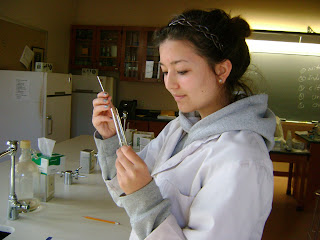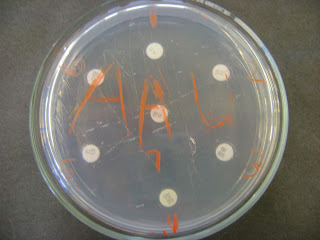After an exciting, nerve-wreaking week of watching Outbreak, it is back to the exciting world of bacteria 'L'. First up we took the Citrate test. We used the aseptic technique to place 'L' in a citrate tube, which is a lovely green color. It was then placed in the incubator at 25 degrees Celsius. Next we preped the Indole test. We used the aseptic technique and inoculated our bacteria in the Indole broth and placed the broth in the incubator at 25 degrees Celsius. Next the Nitrate Reduction test was prepared by using the aseptic technique to place bacteria 'L' into the broth and once again into the incubator at 25 degrees Celsius.
The Urea Hydrolysis test was also preped by using the aseptic technique to place bacteria 'L' into the urea broth, this too was incubated at 25 degrees Celsius. These tests will all be checked for results next class.
We than used the aseptic technique to create a new slant of bacteria 'L' so that we could test for the presence of oxidase and using the same technique we created a streak plate of 'L' and placed antibiotics in concentrated areas. This will help us determine what antibiotics are effective against 'L' Moving clockwise we placed the antibiotics in the following order:
1) Penicillin
2) Vancomycin
3) Nocabiocin
4) Tetracycline
5)Erythromycin
6) Chloramphenical
7) Neomycin
1 & 2 affect bacterial cell walls, while 3 attacks Nucleic Acids, and 4, 5, 6 & 7 attack protein synthesis. Therefore each will have a different effect on different bacteria!!
(left to right) Citrate Test, Indole, Nitrate Reduction, Urea
Bacteria 'L' with the antibiotics [1 at top, move clockwise, 7 in center]
Annie B



















